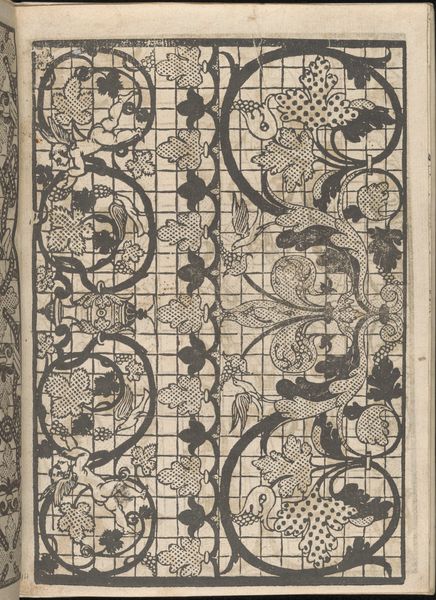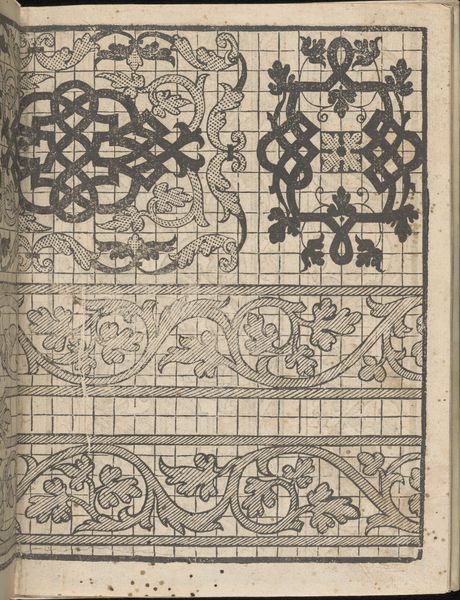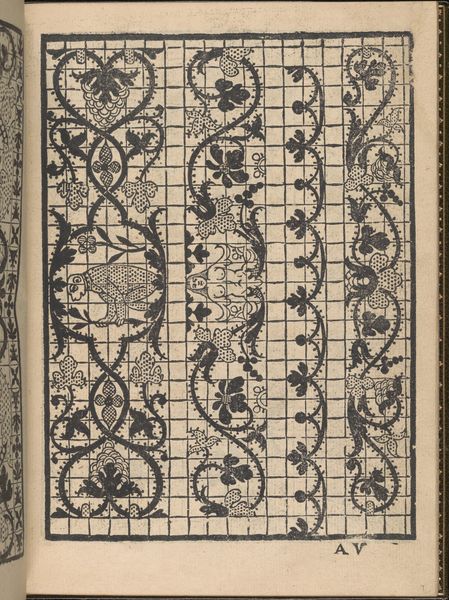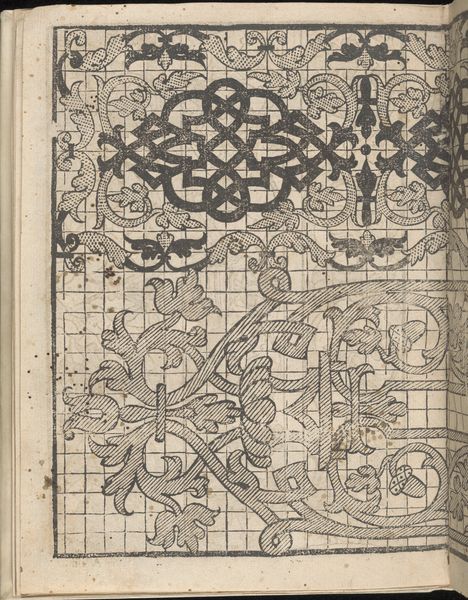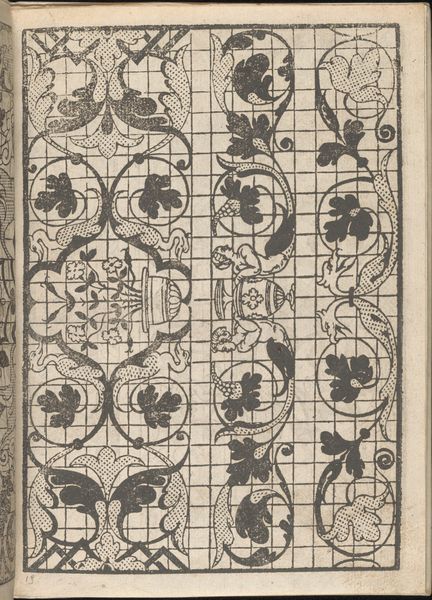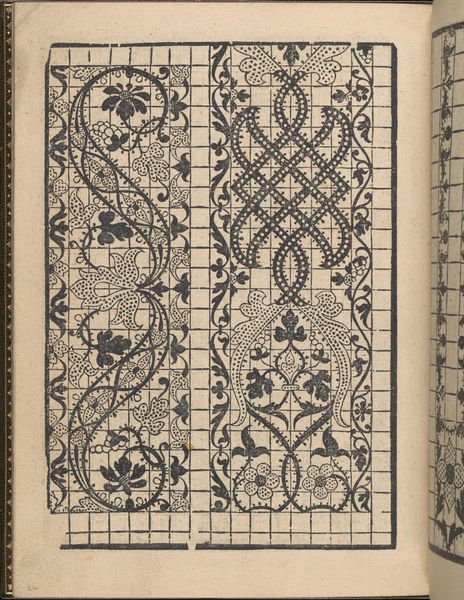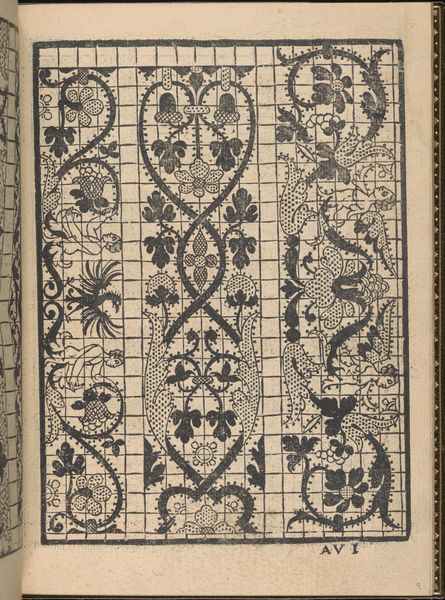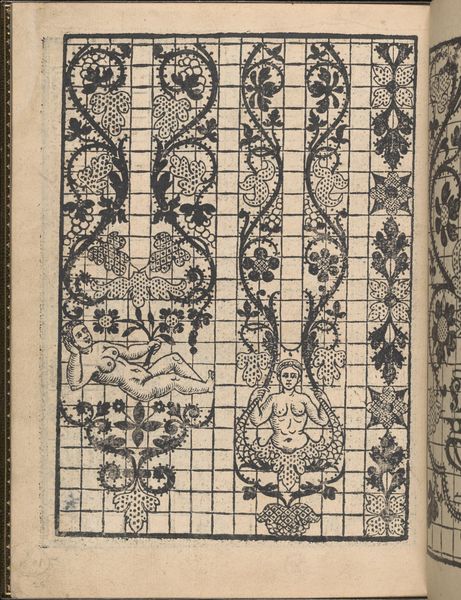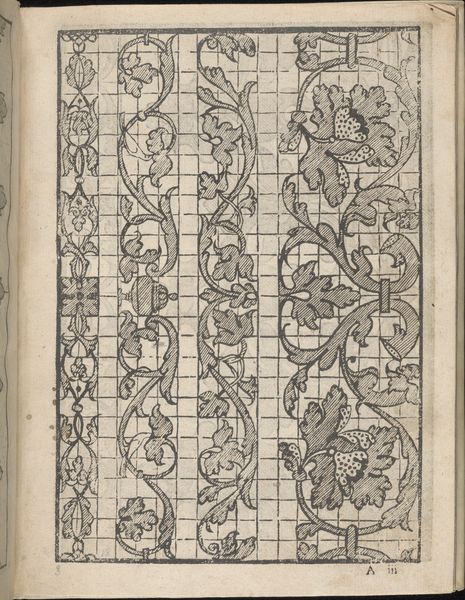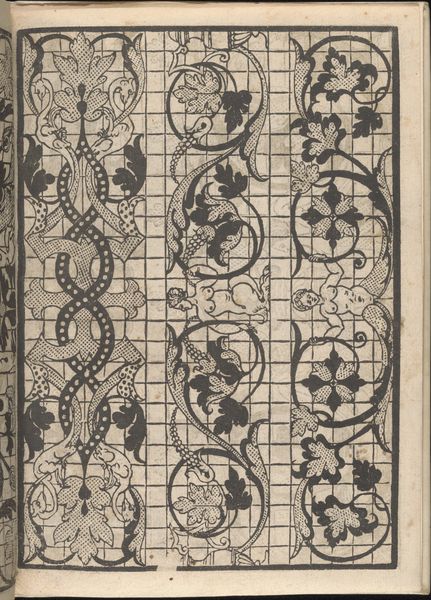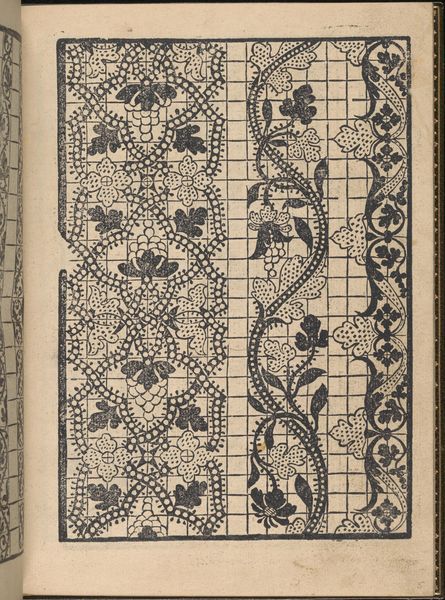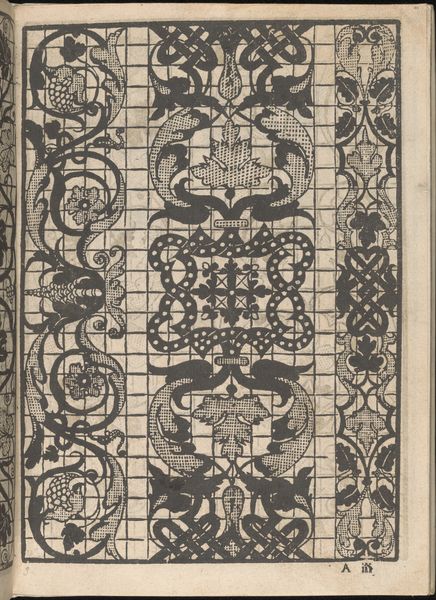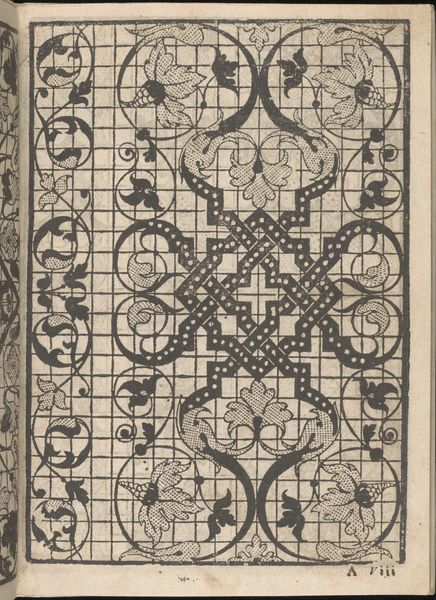
La Gloria et l'Honore di Ponti Tagliati, E Ponti in Aere, page 11 (verso) 1556
0:00
0:00
drawing, print, woodcut, engraving
#
drawing
#
pen drawing
# print
#
bird
#
flower
#
form
#
11_renaissance
#
plant
#
woodcut
#
line
#
islamic-art
#
engraving
Dimensions: Overall: 8 1/4 x 6 1/8 in. (21 x 15.5 cm)
Copyright: Public Domain
Editor: We're looking at "La Gloria et l'Honore di Ponti Tagliati, E Ponti in Aere," page 11 (verso), a print by Matteo Pagano from 1556, currently residing at the Met. The crisp, graphic nature of the image, achieved through woodcut and engraving, is quite striking. What really catches my eye is the underlying grid and how it informs the overall composition, making it feel almost like a blueprint. What are your thoughts when you see this work? Curator: I'm drawn to the material reality of this print, a result of distinct labor. Notice how the grid structure, the woodcut and engraving techniques, all contribute to a dialogue about production. This isn't simply about representing idealized forms. How does Pagano, through his choice of materials and their manipulation, blur the lines between "high art" and more functional crafts like textile design or pattern-making? The grid, in particular, signals a modularity, a repeatable element essential for mass production. Editor: So, you're suggesting that the grid points less to abstract order and more to the possibilities of reproduction and, perhaps, even commercialization of these designs? The fact that it could be applied to textiles hadn't occurred to me. Curator: Precisely! It asks us to consider the economic and social forces shaping artistic production. Was Pagano thinking about the dissemination of his designs, and how the material form itself could facilitate that? Editor: I see! So the subject isn't necessarily just the ornamentation, but also the way this ornamentation could be reproduced and consumed. What do the flowers and animals then represent? A luxury product perhaps? Curator: Or perhaps a direct link to a potential buyer: suggesting its possible applications, in say, a garden. We shouldn't disregard the content but appreciate how it too, is defined by this context of materials and labour. Editor: That's a really interesting point; seeing how the means of production deeply affects how we understand it and its place in society. Curator: Indeed! Thinking about art this way connects it more directly to everyday life, moving it beyond the realm of purely aesthetic appreciation.
Comments
No comments
Be the first to comment and join the conversation on the ultimate creative platform.
